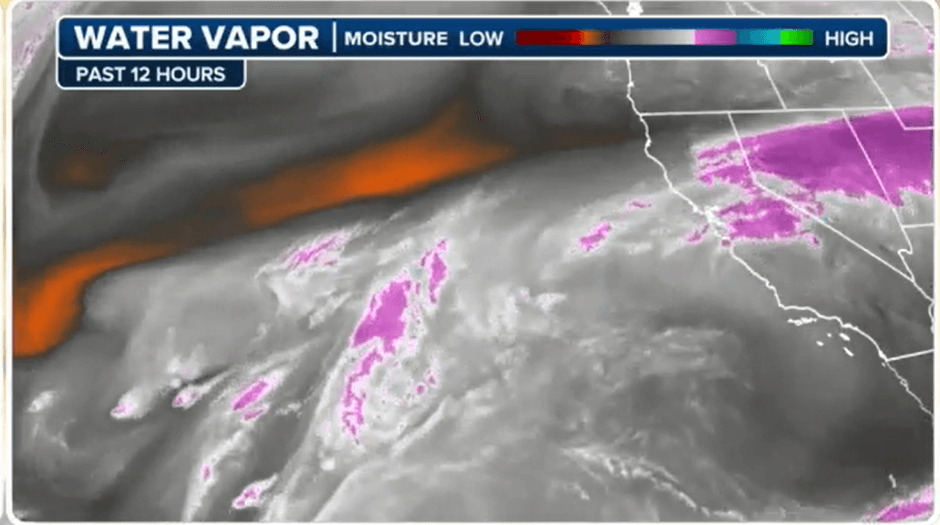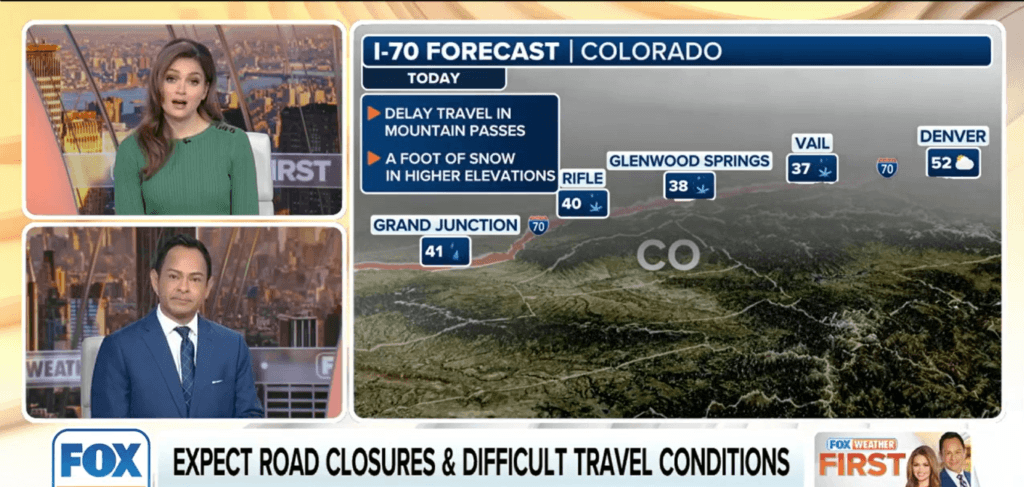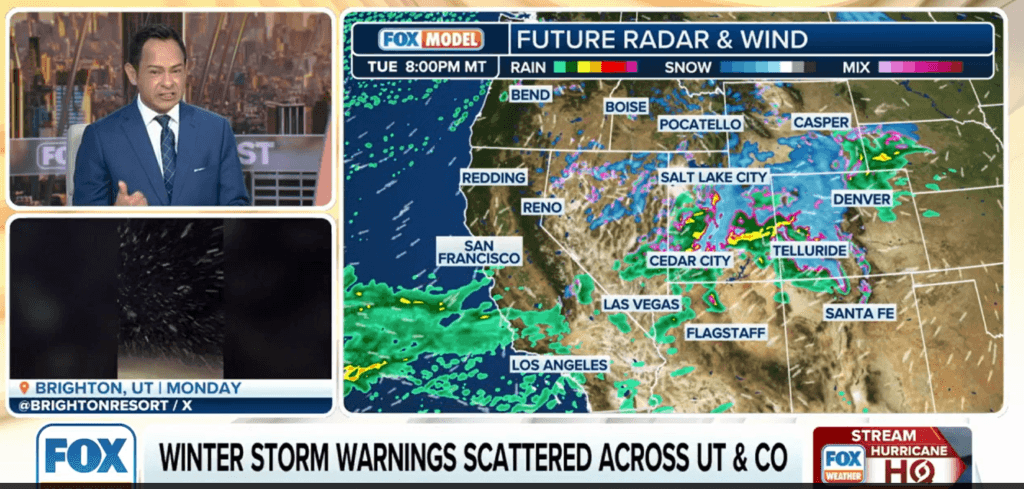
Thanksgiving, one of the busiest travel periods of the year, has millions of Americans hitting the roads and airports to celebrate with family and friends. However, this year’s festivities face a significant challenge as a powerful winter storm system moves across the country, threatening to snarl travel plans before, during, and after the holiday. From heavy snow in the West to rain and freezing temperatures in the East, travelers should prepare for disruptions. Here’s a detailed breakdown of the expected weather and its impacts.
Winter Weather Wreaks Havoc in the West

The western United States is already feeling the effects of a significant winter storm. Heavy mountain snow and rain have blanketed the region, with Winter Storm Warnings in effect for areas from California to the Rockies.
Snowy Conditions Across the Rockies

The winter storm began its journey in California earlier this week, bringing substantial rainfall before heading east into states like Colorado and Utah. Mountainous regions are seeing snow totals that could reach up to three feet, making travel on key routes, such as Interstate 70, challenging. Winter weather alerts are widespread, with the potential for near-impossible travel conditions across mountain passes.
Impact on Major Cities in the winter storm

Cities like Salt Lake City, Las Vegas, and Denver are experiencing varied precipitation types, from rain to snow, as the storm progresses. Although Denver may avoid major impacts, travelers on key highways, including I-25 and I-70, could face hazardous conditions. These disruptions highlight the importance of monitoring local forecasts and preparing for potential delays.
Rain and Snow Spread Across the East

As the storm system moves eastward, a cold front stretching from the Southeast to northern New England is creating a mix of rain, freezing rain, and snow, further complicating Thanksgiving travel.
Challenges for Air and Road Travel during a winter storm
Major airports in the East, including those in Atlanta, Washington, Baltimore, and New York, are experiencing delays due to adverse weather. Low ceilings, gusty winds, and reduced visibility are primary concerns for travelers. For those driving, icy conditions in northern regions such as Vermont, New Hampshire, and Maine pose additional hazards.
Improving Conditions Later in the Day
The good news is that rising temperatures in some areas will help melt ice, easing travel conditions later in the day. However, the need for patience remains critical, as millions of people take to the roads and skies.
Thanksgiving Day Storm: A New Threat Emerges
While the current storm system creates havoc, another winter storm is set to make an appearance on Thanksgiving Day, promising further complications for travelers and shoppers alike.
Impact on the Midwest and Northeast
By Thanksgiving Day, the storm system is expected to shift into the Midwest and Northeast. Rain and thunderstorms will sweep through the Southeast and Tennessee Valley, with some storms potentially reaching severe levels. Meanwhile, the northern areas, including New England, will likely see snow, particularly in higher elevations such as the Green and White Mountains.
Flight Delays and Road Slowdowns
As the system strengthens, strong winds and heavier rain could delay flights at major airports in cities like New York, Philadelphia, and Washington, D.C. Drivers should prepare for reduced visibility and slippery roads, especially in snowy regions.
Post-Thanksgiving Weather: Lake-Effect Snow and Plummeting Temperatures
After Thanksgiving, the weather conditions will continue to challenge travelers as the storm exits the Northeast and ushers in a wave of colder air.
Lake-Effect Snow in the Great Lakes Region
The arrival of frigid air over the Great Lakes will lead to significant lake-effect snow, particularly in areas downwind of Lakes Michigan, Erie, and Ontario. Forecast models suggest the potential for several feet of snow in localized areas, depending on wind patterns and the setup of snow bands.
Frigid Temperatures Across the Country
Temperatures are expected to drop significantly, with many regions struggling to rise above freezing. Cities in the Great Lakes and Northeast will see the brunt of the cold air, making post-Thanksgiving travel more challenging.
Tips for Navigating Thanksgiving Travel Amid Winter Weather
With winter storms affecting travel plans across the U.S., here are some practical tips to ensure a safer and less stressful journey:
- Stay Informed: Regularly check weather forecasts for your departure and destination locations. Apps like FOX Weather can provide real-time updates.
- Plan for Delays: Allow extra time for travel, whether you’re driving or flying. Monitor airport status and flight delays, especially at hubs known for weather disruptions.
- Prepare for Winter Driving: If driving in snowy or icy conditions, equip your vehicle with snow tires or chains, and pack an emergency kit with essentials like water, blankets, and a flashlight.
- Adjust Travel Plans if Needed: If conditions become too hazardous, consider rescheduling your trip or seeking alternative routes.
Conclusion: A Thanksgiving to Remember
This Thanksgiving travel season presents unique challenges as powerful winter storms sweep across the country, affecting millions of travelers. From heavy snow in the West to icy roads and airport delays in the East, patience and preparation will be crucial for those embarking on holiday journeys. By staying informed and taking precautions, travelers can navigate these disruptions and make the most of their Thanksgiving celebrations.


